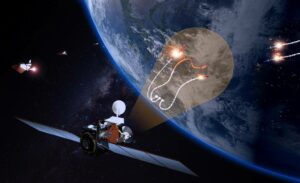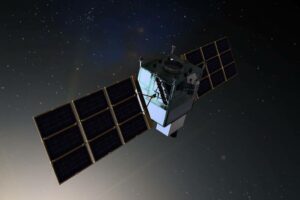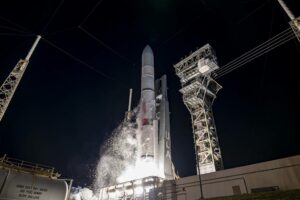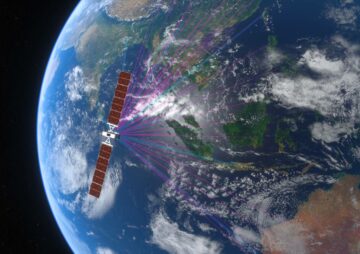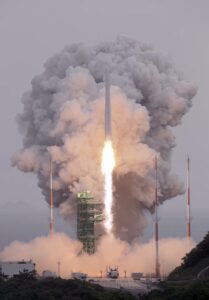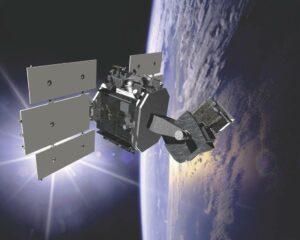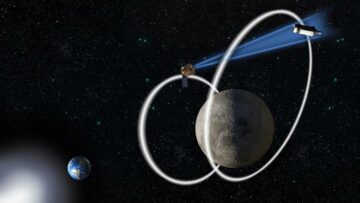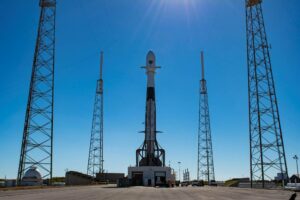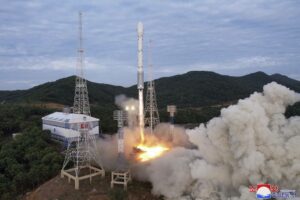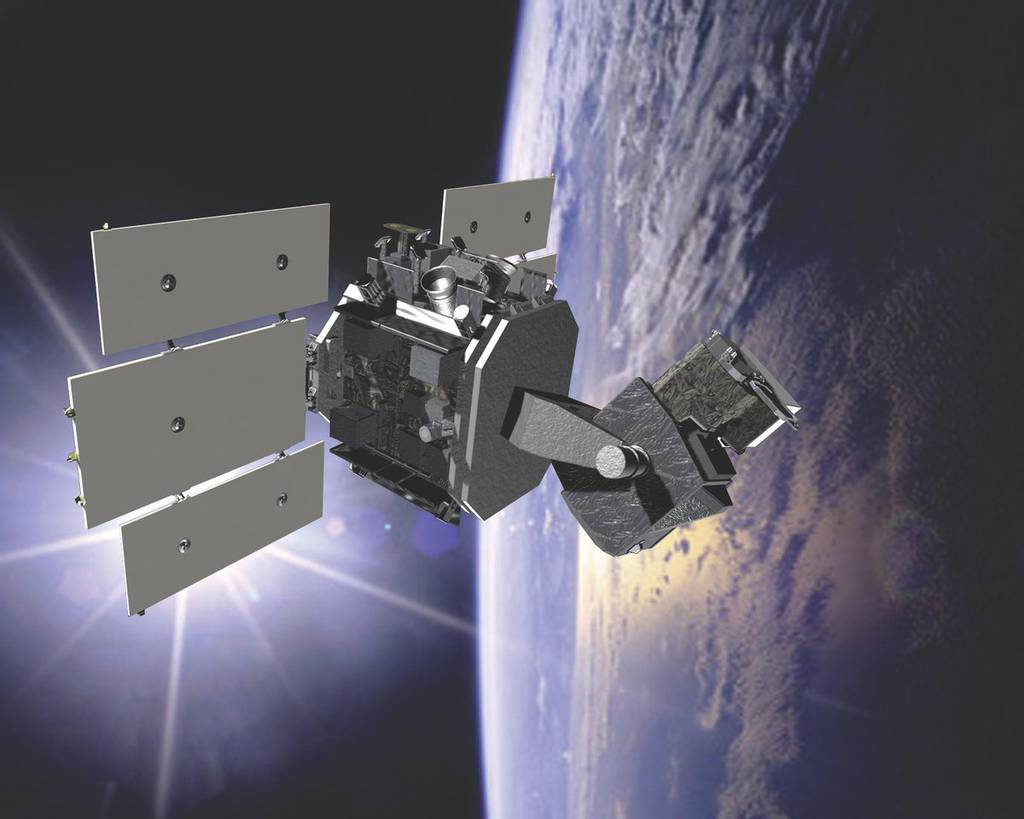
WASHINGTON — The U.S. Space Force and the National Reconnaissance Office launched their newest space observation satellites today in a largely classified mission called “Silent Barker.”
The joint mission flew Sept. 10 on a United Launch Alliance Atlas V rocket from Cape Canaveral Space Force Base in Florida. Once operational, the satellites will track objects — and potentially nefarious activities — within geosynchronous orbit, about 22,000 miles above Earth.
“Working together, we’ve developed a system in a relatively short amount of time that is going to provide us with unprecedented coverage of what’s going on in the GEO belts,” NRO director Christopher Scolese told reporters during an Aug. 28 pre-launch briefing.
The mission had been planned for Aug. 29, but was delayed due to weather conditions.
Tracking activity in space, and particularly in GEO, has been a growing priority for the Space Force and the NRO as adversaries like Russia and China have shown signs of possible aggression in the regime. In 2020, then-Chief of Space Operations Gen. Jay Raymond revealed that two Russian satellites were trailing a U.S. spy satellite and called the behavior “unusual and disturbing.”
Most of the Space Force’s space observation capabilities come from ground-based sensors, which can view larger, basketball-sized objects, but can’t provide the level of visibility and detail the agencies hope to get through Silent Barker. Commander of Space Systems Command Lt. Gen. Guetlein told reporters in the same briefing that having intelligence sensors closer to the area they want to watch will allow operators to better follow an object’s movement.
“By actually moving the sensor into orbit with those objects, they can not only detect smaller objects, but maintain custody of them,” he said.
The agencies announced in December of 2017 they would partner to develop Silent Barker as a replacement for the older Space-Based Space Surveillance System satellites, which are set to reach the end of their life span in 2028. Scolese said the team put an acquisition plan in place in 2020 and took about three years to build the satellites and prepare for launch.
The Space Force’s fiscal 2024 budget request includes $115.6 million for Silent Barker, which is expected to be fully operational by 2026.
Scolese and Guetlein declined to discuss in detail how the new sensor design differs from SBSS, though Scolese offered that Silent Barker is “very, very different” from its predecessor constellation. The officials did not disclose how many satellites launched on the Sept. 10 mission — except to say there is more than one — and would not confirm how many spacecraft will ultimately comprise the constellation or what companies are involved in building them.
Though details on the program are slim, Guetlein noted that the agencies were intentional about making the existence of Silent Barker known in order to deter bad behavior in space.
“A huge element of deterrence is the ability for the adversary to know what we can and cannot see,” he said. “We actually want our adversaries to know that we have eyes in GEO, that we can see what’s happening.”
Courtney Albon is C4ISRNET’s space and emerging technology reporter. She has covered the U.S. military since 2012, with a focus on the Air Force and Space Force. She has reported on some of the Defense Department’s most significant acquisition, budget and policy challenges.
- SEO Powered Content & PR Distribution. Get Amplified Today.
- PlatoData.Network Vertical Generative Ai. Empower Yourself. Access Here.
- PlatoAiStream. Web3 Intelligence. Knowledge Amplified. Access Here.
- PlatoESG. Automotive / EVs, Carbon, CleanTech, Energy, Environment, Solar, Waste Management. Access Here.
- PlatoHealth. Biotech and Clinical Trials Intelligence. Access Here.
- ChartPrime. Elevate your Trading Game with ChartPrime. Access Here.
- BlockOffsets. Modernizing Environmental Offset Ownership. Access Here.
- Source: https://www.defensenews.com/battlefield-tech/space/2023/09/10/space-force-nro-launch-silent-barker-space-observation-satellites/
- :has
- :is
- :not
- 000
- 10
- 2012
- 2017
- 2020
- 2024
- 2026
- 2028
- 22
- 28
- 29
- 70
- a
- ability
- About
- above
- acquisition
- activities
- activity
- actually
- agencies
- AIR
- Air Force
- Alliance
- allow
- amount
- an
- and
- announced
- ARE
- AREA
- AS
- atlas
- Aug
- Bad
- base
- BE
- been
- Better
- Briefing
- budget
- build
- Building
- but
- by
- called
- CAN
- cannot
- capabilities
- challenges
- China
- Christopher
- classified
- closer
- come
- Companies
- conditions
- Confirm
- coverage
- covered
- Custody
- December
- Defense
- Delayed
- Design
- detail
- details
- develop
- developed
- DID
- Director
- Disclose
- discuss
- due
- during
- earth
- element
- emerging
- Emerging Technology
- end
- Except
- expected
- Eyes
- Fiscal
- florida
- Focus
- follow
- For
- Force
- from
- fully
- Gen
- get
- going
- Growing
- had
- Happening
- Have
- he
- hope
- How
- HTTPS
- huge
- images
- in
- includes
- Intelligence
- Intentional
- into
- involved
- ITS
- joint
- jpg
- Know
- known
- largely
- larger
- launch
- launched
- Level
- Life
- like
- maintain
- Making
- many
- Military
- million
- Mission
- more
- most
- movement
- moving
- National
- New
- Newest
- noted
- objects
- of
- offered
- Office
- officials
- older
- on
- once
- ONE
- only
- operational
- Operations
- operators
- or
- Orbit
- order
- our
- particularly
- partner
- Place
- plan
- planned
- plato
- Plato Data Intelligence
- PlatoData
- policy
- possible
- potentially
- predecessor
- Prepare
- priority
- Program
- provide
- put
- reach
- regime
- relatively
- replacement
- Reported
- reporter
- request
- Revealed
- rocket
- Russia
- russian
- s
- Said
- same
- satellite
- satellites
- say
- see
- sensors
- sept
- set
- she
- Short
- shown
- significant
- Signs
- since
- smaller
- some
- Space
- Space Force
- space-based
- spacecraft
- span
- surveillance
- system
- Systems
- team
- Technology
- than
- that
- The
- The Area
- their
- Them
- There.
- they
- those
- though?
- three
- Through
- time
- to
- today
- together
- told
- took
- track
- two
- u.s.
- U.S. Space Force
- Ultimately
- United
- unprecedented
- us
- very
- View
- visibility
- want
- was
- we
- Weather
- were
- What
- which
- will
- with
- within
- would
- years
- zephyrnet

